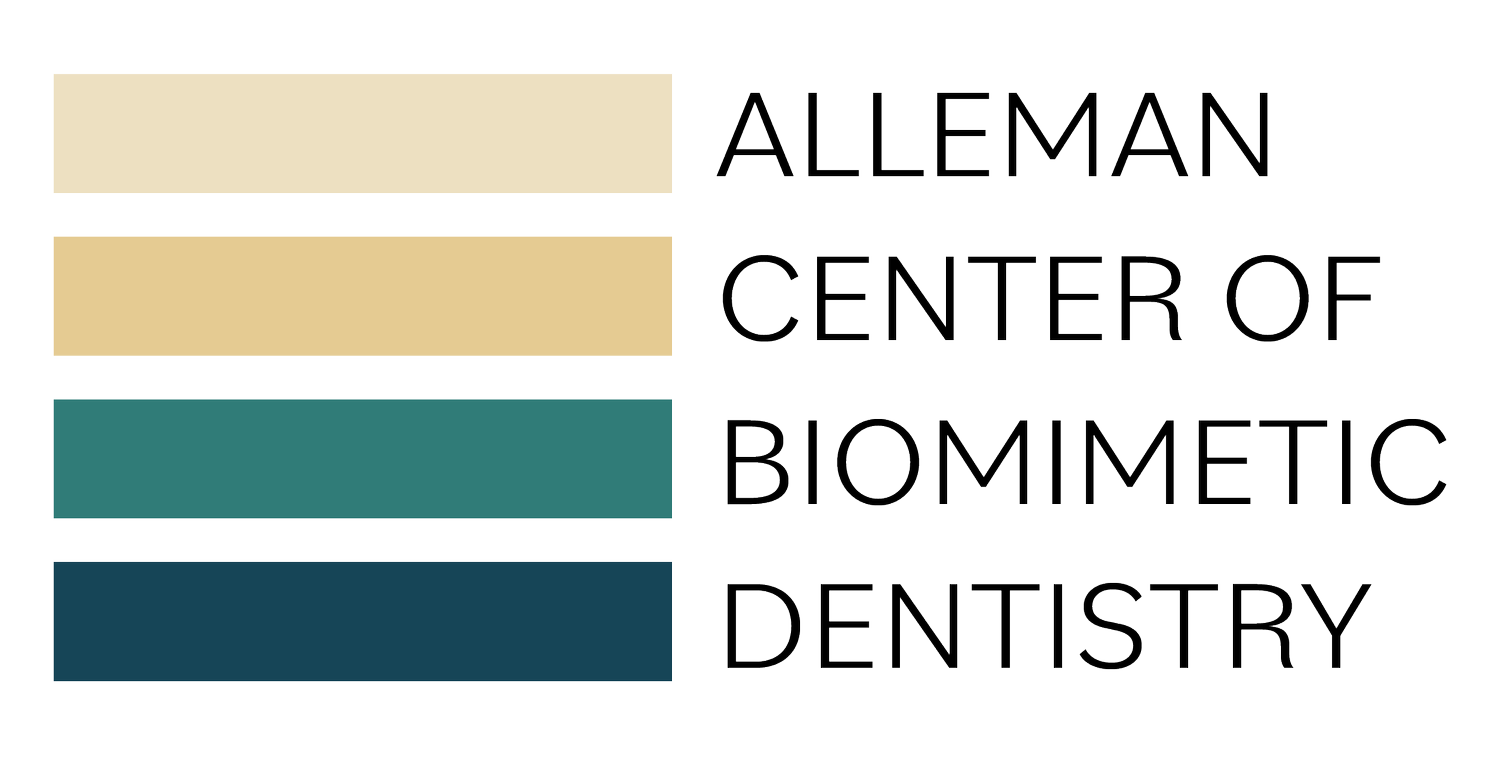Evidence-based Dentistry
Dentists and patients alike want evidence-based dentistry, the idea of using the latest dental research to provide the best possible outcomes for patients. Yet the concept is more complicated than it appears, which means great achievements in the field of dentistry can often go years or decades without being widely adopted by practitioners. Read below for why accessing and implementing peer-reviewed research is more difficult than it may seem and how practitioners can overcome the hurdles of incorporating evidence-based dentistry into their own office.
Why do dental restorations like this fail or cause post-operative sensitivity? Dr. David Alleman, DDS spent five years studying peer-reviewed literature to find out. Initial case photo by Dr. Davey Alleman, DMD.
Why the latest research advancements are not always implemented into practice
Dental researchers devote their entire career to advancements in dental treatments and materials, but once their work is reviewed and published, it is not their responsibility to then market their research. Dental schools are required to train their students to certain standards, but adapting those standards to current research often takes years or decades. Meanwhile, practicing dentists are bombarded with a flood of continuing education courses claiming to offer the next best thing in dentistry.
Research from 1982 to 2009 has shown the effectiveness of removing cracks to treat symptoms. Why are dentists still not treating cracks in this way decades later?
Case photos by Dr. Davey Alleman, DMD
This disconnect between research, schools and practitioners leaves critical research to fall through the cracks. Dr. David Alleman, DDS realized this first-hand when he began his own research in 1995. Frustrated with failing restorations from what he learned in dental school, he sought more predictability in his work.
After training with his early mentors Dr. Ray Bertolotti and Dr. Gary Unterbrink, he still had questions that took him directly to the dental literature. His unrelenting need to find answers to his questions about failing, symptomatic, leaking and overly invasive restorations led to a five-year literature review. By bridging the gap between research and practice, Dr. David Alleman was able to achieve superior restorations that resolved sensitivity and stayed bonded.
Learn more about Dr. David Alleman’s early career and pioneering research in his Six Lessons Approach Podcast episode.
How biomimetic dentistry and the Six Lessons Approach optimizes peer-reviewed literature for dentists
While dental research gives dentists new treatment options for their patients, how to incorporate that research isn’t always clear. When Dr. David Alleman was conducting his literature review, he identified 18 factors in a restoration that were essential to a successful outcome. He distilled thousands of articles into 18 concepts and techniques. Few dentists have the time and resources to complete a task like this on their own, which is why he created his Six Lessons Approach to Biomimetic Restorative Dentistry.
The Six Lessons Approach is a systematic restorative approach that outlines clear protocols based on current peer-reviewed literature. During Dr. David Alleman’s Biomimetic Mastership training program, doctors study the core 130 articles that support each lesson:
Lesson 1: Diagnosis and treatment of caries
Lesson 2: Structural analysis and treatment of cracks into dentin
Lesson 4: C-factor and deep margin elevation
Lesson 5: Onlay fabrication and biomimetic prep design
Lesson 6: Occlusal adjustment and verticalization of the envelope of function
By studying the research along with the protocols, alumni of the Biomimetic Mastership say they have greater confidence in their work because they know why it works.
When doctors understand the research behind materials and techniques, they see the supporting articles behind every step in this restoration using the Six Lessons Approach by Dr. Davey Alleman, DMD.
How practitioners can incorporate peer-reviewed research into their work
Diving into the literature can be overwhelming, so we recommend starting with the following for doctors interested in evidence-based dentistry:
Read your bibliography: at your next CE course, request a bibliography. By reading the research behind what you are studying, you will gain a deeper understanding of how your new protocols will change your restorative outcomes.
Learn how research is conducted: not all research is created equal. Take the time to see how experiments are conducted, identify confounding variables and compare the findings with similar experiments. Always ask why and how a conclusion was reached, rather than just assuming the conclusion will work outside of an isolated experiment.
Mentorship supports your work: Dr. David Alleman created the Biomimetic Mastership because he saw the need for a long-term mentorship program. Biomimetic dentistry is better, not easier. As questions about the protocols and the supporting literature arise, having a mentor to guide you through your studies helps expedite your learning and support your professional growth.
Incorporating evidence-based dentistry into your work takes your daily practice to the next level. This deep understanding of why you use certain techniques or materials over others adds confidence to your work and predictability to your treatment outcomes. This is why we only teach the Six Lessons Approach in Alleman Center training programs. Over the last two decades, this systematic approach has been proven to yield the longest-lasting outcomes for every doctor we train. Study evidence-based dentistry in the Biomimetic Mastership and other Alleman Center dentistry training programs.













